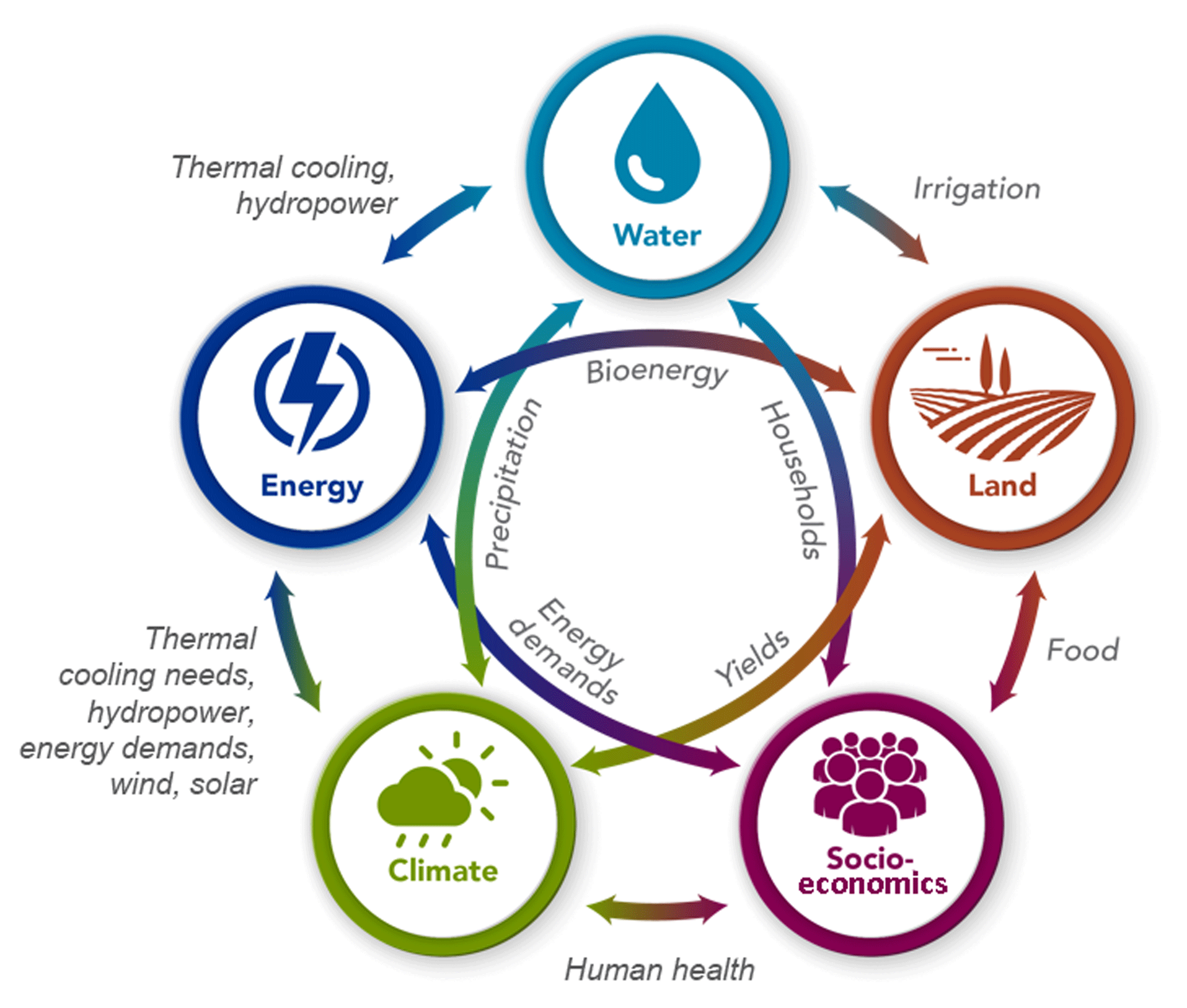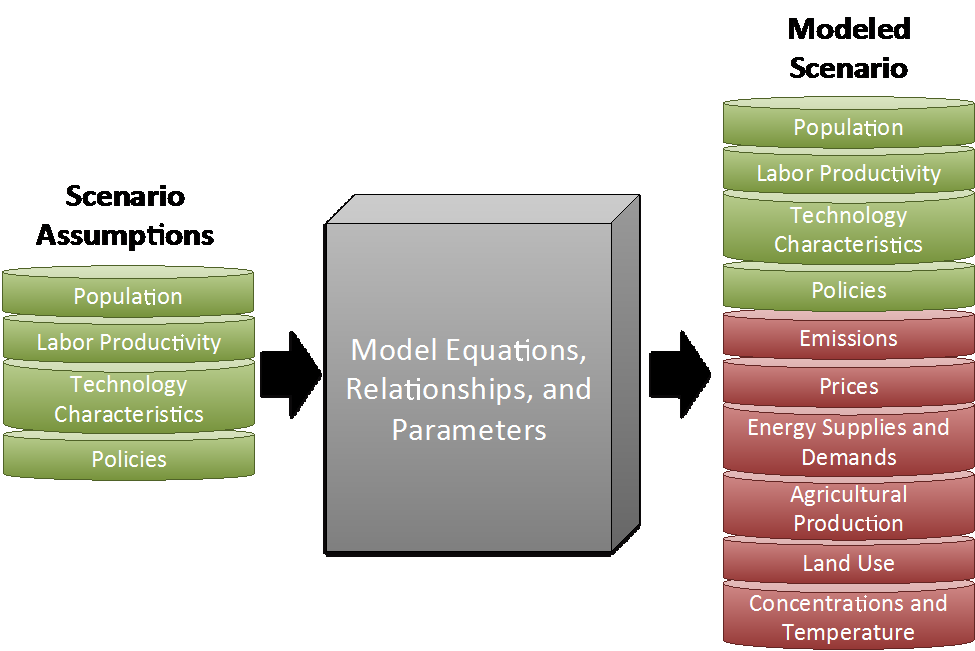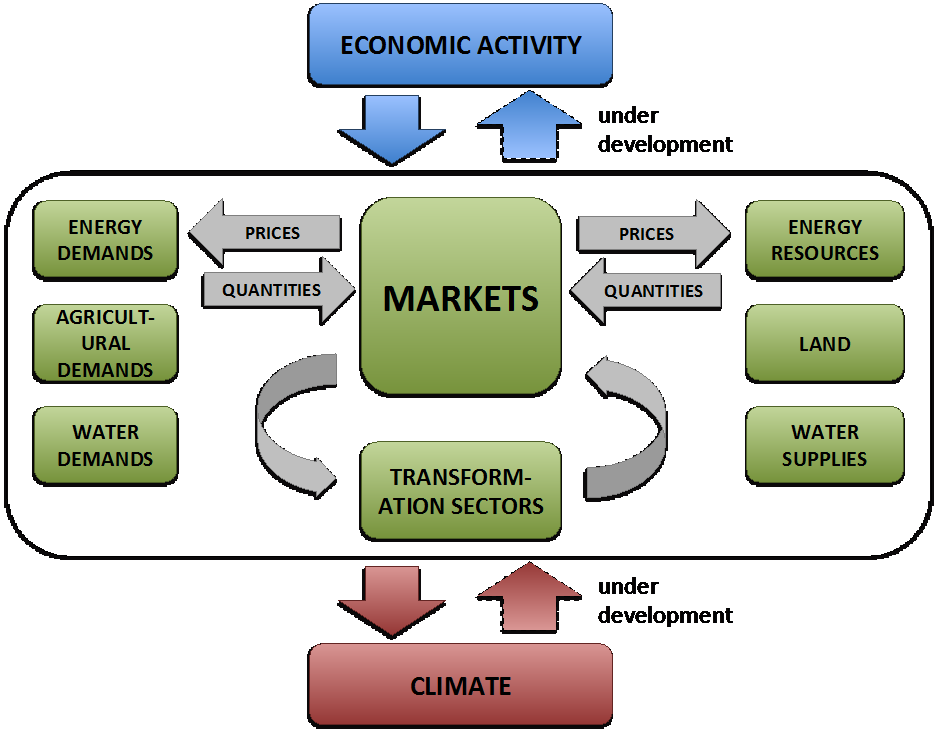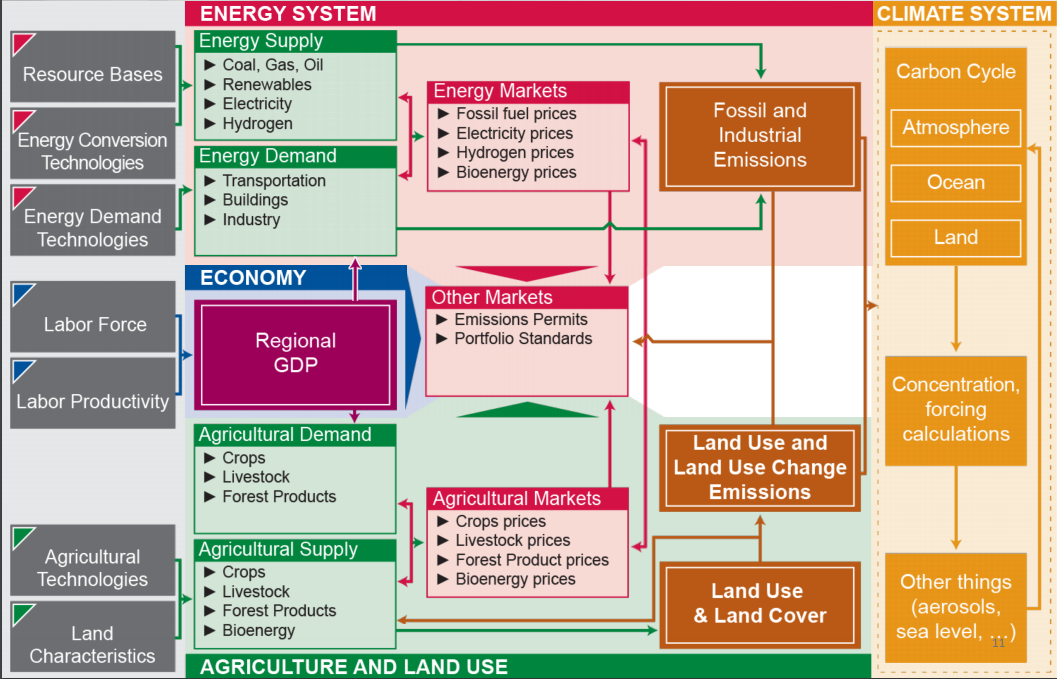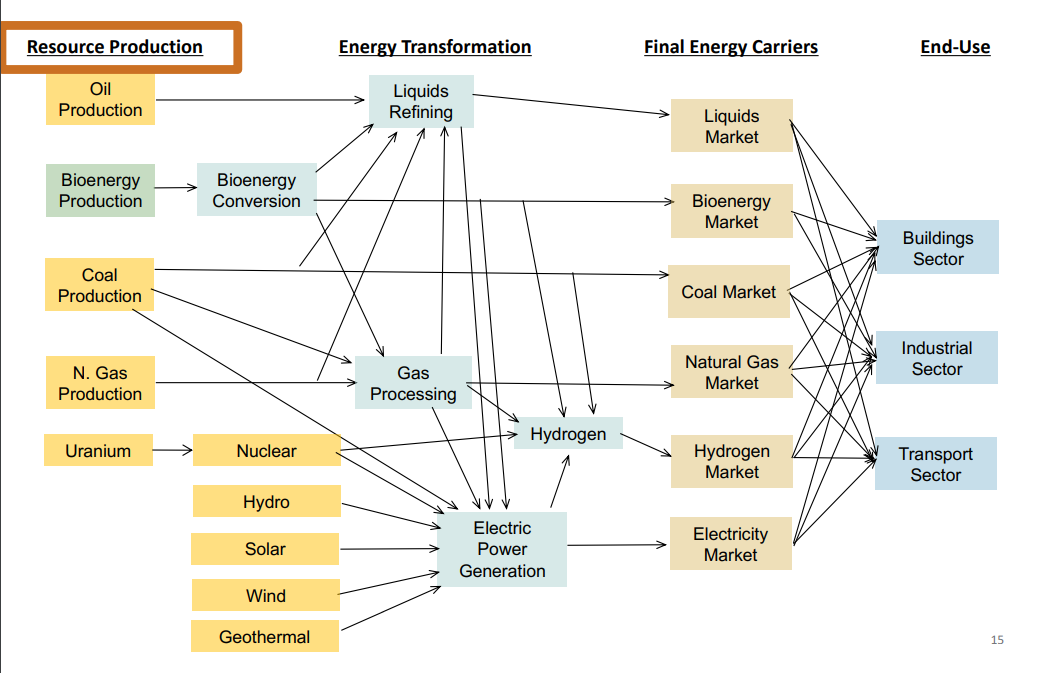Quoted from: https://github.com/JGCRI/gcam-core
The Joint Global Change Research Institute (JGCRI) is the home and primary development institution for GCAM, an integrated assessment tool for exploring consequences and responses to global change. Climate change is a global issue that impacts all regions of the world and all sectors of the global economy. Thus, any responses to the threat of climate change, such as policies or international agreements to limit greenhouse gas emissions, can have wide ranging consequences throughout the energy system as well as on land use and land cover. Integrated assessment models endeavor to represent all world regions and all sectors of the economy in an economic framework in order to explore interactions between sectors and understand the potential ramifications of climate mitigation actions.
GCAM has been developed at PNNL for over 20 years and is now a freely available community model and documented online (See below). The team at JGCRI is comprised of economists, engineers, energy experts, forest ecologists, agricultural scientists, and climate system scientists who develop the model and apply it to a range of science and policy questions and work closely with Earth system and ecosystem modelers to integrate the human decision components of GCAM into their analyses.
Model Overview
GCAM is a dynamic-recursive model with technology-rich representations of the economy, energy sector, land use and water linked to a climate model that can be used to explore climate change mitigation policies including carbon taxes, carbon trading, regulations and accelerated deployment of energy technology. Regional population and labor productivity growth assumptions drive the energy and land-use systems employing numerous technology options to produce, transform, and provide energy services as well as to produce agriculture and forest products, and to determine land use and land cover. Using a run period extending from 1990 – 2100 at 5 year intervals, GCAM has been used to explore the potential role of emerging energy supply technologies and the greenhouse gas consequences of specific policy measures or energy technology adoption including; CO2 capture and storage, bioenergy, hydrogen systems, nuclear energy, renewable energy technology, and energy use technology in buildings, industry and the transportation sectors. GCAM is an Representative Concentration Pathway (RCP)-class model. This means it can be used to simulate scenarios, policies, and emission targets from various sources including the Intergovernmental Panel on Climate Change (IPCC). Output includes projections of future energy supply and demand and the resulting greenhouse gas emissions, radiative forcing and climate effects of 16 greenhouse gases, aerosols and short-lived species at 0.5×0.5 degree resolution, contingent on assumptions about future population, economy, technology, and climate mitigation policy.


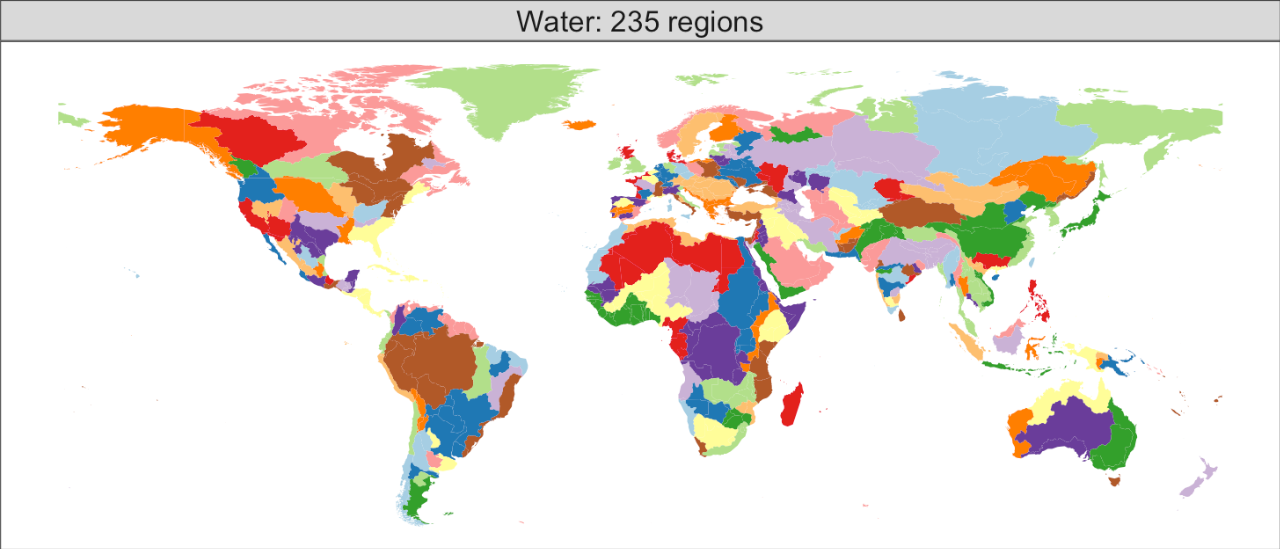
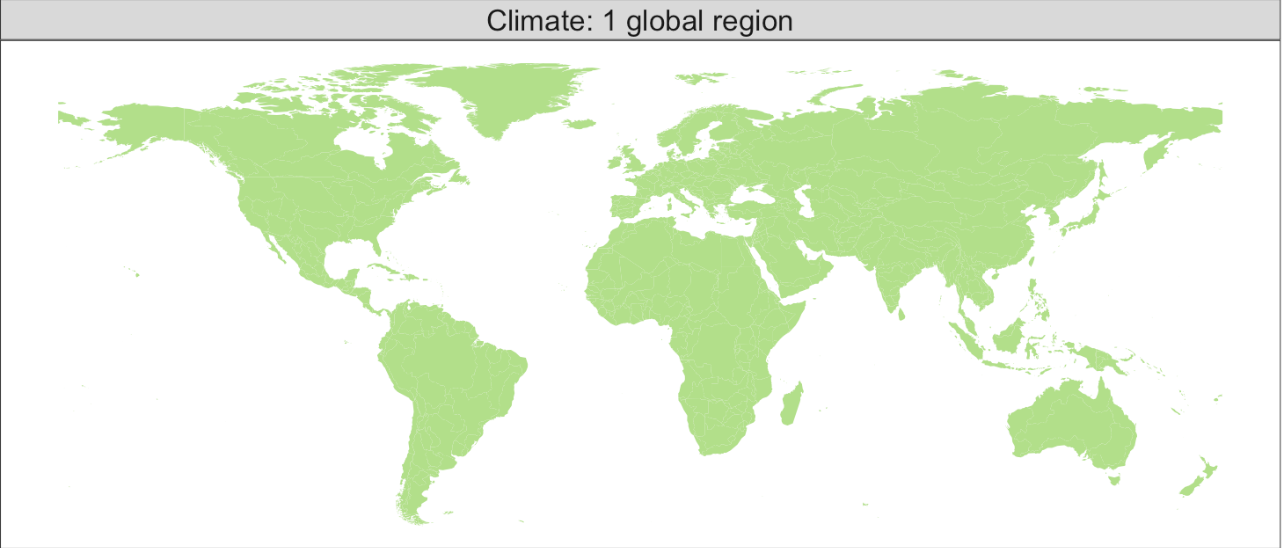
Documentation
Selected Publications
Edmonds, J., and J. Reilly (1985)Global Energy: Assessing the Future (Oxford University Press, New York) pp.317.
Edmonds, J., M. Wise, H. Pitcher, R. Richels, T. Wigley, and C. MacCracken. (1997) “An Integrated Assessment of Climate Change and the Accelerated Introduction of Advanced Energy Technologies”, Mitigation and Adaptation Strategies for Global Change, 1, pp. 311-39
Kim, S.H., J. Edmonds, J. Lurz, S. J. Smith, and M. Wise (2006) “The ObjECTS Framework for Integrated Assessment: Hybrid Modeling of Transportation ” Energy Journal (Special Issue #2) pp 51-80.
Full list of GCAM publications


